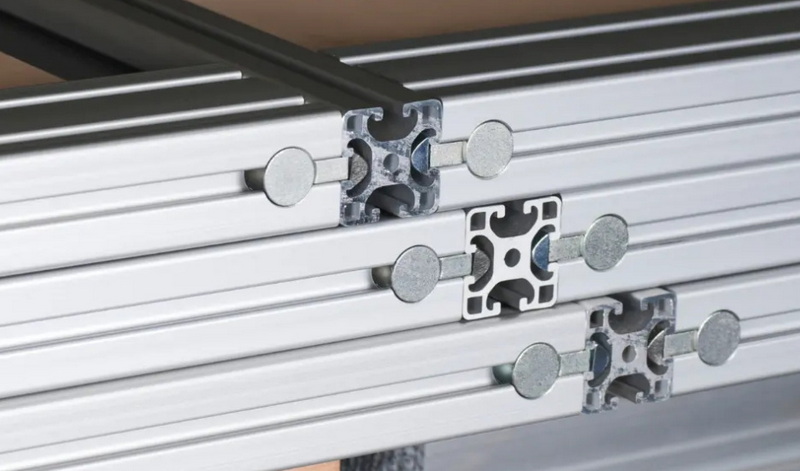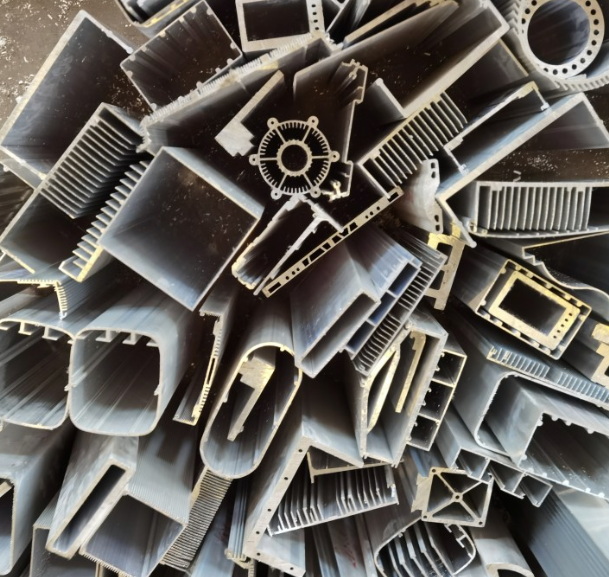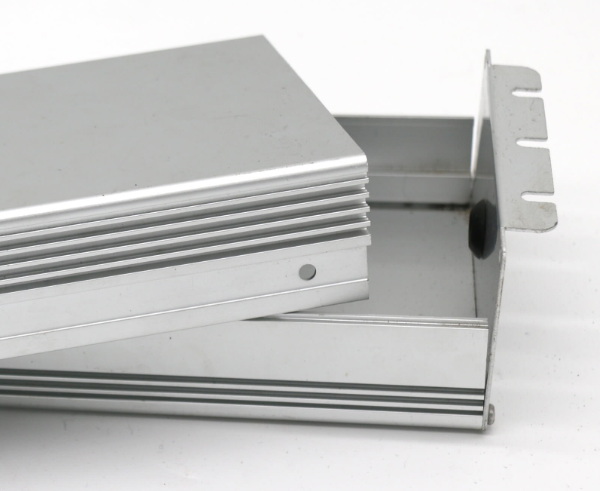Content Menu
● Versatility in Design
● Material Properties
● Cost Efficiency
● Manufacturing Advantages
● Applications Across Industries
● Specific Applications of Industrial Aluminum Extrusions
● Sustainability
● Innovations in Aluminum Extrusion Technology
● Partnering with an Aluminum Extruder 19116
● Aluminum Extrusion: A Sustainable Material Solution
● Industry-Wide Sustainability Initiatives
● Conclusion
● FAQ
>> Q1: What is aluminum extrusion?
>> Q2: What are the main advantages of using aluminum extrusion?
>> Q3: How does aluminum extrusion compare to other manufacturing processes?
>> Q4: What industries benefit most from aluminum extrusion?
>> Q5: How do I choose the right aluminum extruder 19116 for my project?
● Citations:
Aluminum extrusion is a manufacturing process where aluminum alloy is forced through a die of a specific cross-section. This process creates complex and custom shapes for various applications across industries[1]. An "aluminum extruder 19116" refers to a company or manufacturer specializing in this process, likely located in the 19116 zip code area. Here are the key benefits of using aluminum extrusions and partnering with an "aluminum extruder 19116".

Versatility in Design
- Complex Shapes: Aluminum extrusion enables the production of intricate and complex geometries that would be difficult or impossible to produce with other manufacturing methods[1]. This includes hollow shapes, intricate profiles, and designs with varying wall thicknesses.
- Customization: The process allows for a high degree of customization. Dies can be created to meet specific design requirements, making it ideal for specialized applications.
- Seamless Construction: Aluminum extrusion can produce parts with seamless construction, which increases strength and reduces the risk of leaks or loosening over time. The flexibility in design allows for the creation of more aesthetically pleasing and functional goods[1].
Material Properties
- Lightweight: Aluminum is approximately one-third the weight of steel, copper, or brass. This makes aluminum extrusions easier to handle, reduces shipping costs, and is ideal for applications where weight reduction is crucial, such as in the automotive and aerospace industries[1].
- Strength: Aluminum extrusions can be designed to provide the required strength for various applications. The extrusion process allows for the concentration of strength by incorporating internal reinforcement and varying wall thicknesses within the profile design[6].
- Corrosion Resistance: Aluminum has excellent corrosion resistance due to a naturally occurring oxide layer that protects the surface. This can be further enhanced through anodizing or other finishing processes[7].
- Thermal Conductivity: Aluminum conducts heat and cold efficiently, making it suitable for heat exchangers and heat dissipation applications. The design flexibility of extrusions allows for optimizing heat dissipation in various components.
- Electrical Conductivity: Aluminum offers good electrical conductivity and is a cost-effective alternative to copper in electrical connectors and bus bar distribution components.
- Non-Sparking: Aluminum is non-sparking, making it safe for use in environments where flammable materials are present.
- Non-Magnetic: Aluminum does not develop a magnetic charge, making it suitable for high-voltage and electronic applications.
- Recyclability: Aluminum can be recycled without losing its quality, making it an environmentally sustainable material choice[4].
Cost Efficiency
- Material Efficiency: The extrusion process ensures high material utilization, reducing waste and enhancing cost-effectiveness[1].
- Lower Production Costs: The cost of aluminum is often lower than other metals, and the production and machining costs are also relatively low.
- Reduced Shipping Costs: Due to its lightweight nature, aluminum extrusions result in lower shipping costs.
- Minimal Material Loss: The aluminum extrusion process minimizes material loss, further contributing to cost savings[6].
Manufacturing Advantages
- High Precision: Aluminum extrusion offers precise dimensions, ensuring uniformity in mass production[6].
- Excellent Surface Quality: Extruded products have a high-quality finish and surface condition, suitable for functional and decorative purposes[6].
- Suitability for Hot and Cold Extrusion: Aluminum is suitable for both hot and cold extrusion processes[6]. Hot extrusion is used for large workpieces, while cold extrusion is suitable for creating various products like tubes, profiles, wires, sheets, and plates.
- Combination with Other Methods: Aluminum extrusion can be combined with other metalworking methods to enhance accuracy and create more complex products[6].
- Increased Strength: Products made by aluminum extrusion typically have increased strength and wear resistance due to the homogeneous structure formed under pressure[6].
- Fast Production: Aluminum extrusion allows for high-volume production in a short period[1].
Applications Across Industries
- Automotive: Used in car frames, engine components, and doors to improve fuel efficiency through lightweight design[7]. Aluminum extrusions are also used as raw materials for automotive support structures, display stands, seat frames, testing racks, and other components[2].
- Construction: Utilized for window frames, door frames, and bridge structures, offering excellent load-bearing capacity and weather resistance[7]. Extruded aluminum profiles are essential in modern architecture, providing strength and stability while allowing sleek, modern designs[7].
- Aerospace: Ideal for aerospace designs due to its high strength-to-weight ratio.
- Electronics: Used in heat sinks, housings, and electronic components due to its thermal and electrical conductivity[7].
- Machinery and Equipment: Suitable for various machinery and equipment applications due to its strength and rigidity[7]. Aluminum extrusion frames play an important role in supporting large-scale automation equipment or instruments[2].

Specific Applications of Industrial Aluminum Extrusions
Industrial aluminum extrusions have a wide range of applications across various sectors[2]:
- Aluminum Extrusion Frames: Used to support large-scale automation equipment or instruments[2]. By customizing aluminum profile frames or brackets and adding corresponding wheels or casters, it becomes possible to achieve free movement of bulky automation equipment. A representative example is the material used for conveyor line frames, which is aluminum profile[2]. The overall installation and disassembly process is simple and convenient.
- Machine Guarding Systems: Primarily used to provide fine segmentation of work areas, with the aim of protecting both production equipment and operators[2]. Aluminum extrusions are used for connecting various small machine guarding panels together.
- Equipment Enclosures: Protective covers designed to protect fragile components and prevent the escape of debris during operation[2]. Applying protective covers to equipment not only enhances the overall aesthetics but, more importantly, increases the safety factor.
- Industrial Ladders: Manufactured using aluminum profiles of various models[2]. The surface of the aluminum profiles used for industrial ladders is typically treated with sandblasting and oxidation or alkali sanding and oxidation. These treatments increase the surface friction coefficient and remove any small burrs or protrusions.
- Workstations: Among the most common applications of aluminum extrusions, widely used across various industries[2]. Different types of workstations are suitable for different work scenarios. For example, conveyor workstations are commonly used in assembly lines, anti-static workstations are suitable for lithium battery and semiconductor factories that require high anti-static performance, and flow rack workstations are mainly used in conjunction with automatic sorting equipment.
- Clean Booths: Require aluminum extrusions that have undergone anodization surface treatment[2]. This treatment enhances the aluminum profiles' anti-static capabilities and ensures a clean surface that is not prone to dust accumulation, making cleaning extremely convenient.
- Automotive Fixtures: The application of aluminum extrusions in the automotive industry is growing rapidly[2]. Currently, aluminum extrusions are used as raw materials for automotive support structures, display stands, seat frames, testing racks, and other components across most automotive brands.
Sustainability
- Recyclable: Aluminum is highly recyclable, which reduces environmental impact and promotes sustainability[4].
- Energy Saving: The production of aluminum extrusions requires less energy compared to other metals[4].
- Reduced CO2 Emissions: Using aluminum extrusions can contribute to reducing CO2 emissions, particularly in the transportation sector due to the lightweight properties[4]. The aluminum industry is making significant strides in reducing carbon emissions across the entire value stream, from mining bauxite to recycling aluminum scrap[8].
- Lean Management: Lean management practices encourage minimal waste and continuous improvement of production processes[3]. Lean transformation involves collaboration and individual employee empowerment. Automation can decrease cycle times and reduce CO2 generation and energy usage[3].
Innovations in Aluminum Extrusion Technology
The aluminum extrusion industry is continuously evolving, with innovations driving efficiency and sustainability[3][5].
- Digitalization and Automation: Integration of technologies such as Extrusion Management Ecosystems (EMS) boosts efficiency and helps reduce costs, with a strong focus on aluminum sustainability[5]. Digitalization allows for real-time monitoring, predictive maintenance, and production process optimization[5].
- Rapid Extrusion Profile Inspection: Advances in rapid extrusion profile inspection using Computerized Topology (CAT) X-ray scanning are being developed[8]. This technology has the potential to eliminate time-consuming sample preparation and can be performed directly at the extrusion press, enhancing efficiency and accuracy in quality control.
- Rapid Quench Systems: New rapid quench systems, utilizing multiple nozzles and adjustable flow valves, are being developed to cool extrusions uniformly as they exit the press[8]. These systems ensure more consistent tempering along the length of the extrusion, reducing straightness and twist deformations, and improving overall product quality.
- Higher Strength Aluminum Alloys: Higher strength 6000 series aluminum alloys are being developed, particularly for automotive applications where strength and durability are paramount[8].
- Artificial Intelligence Integration: Artificial intelligence is being incorporated into various aspects of the extrusion process, including predictive maintenance, die design, and die correction processes[8]. AI and machine learning are being used to optimize plant operations, from quoting to process development for extrusion.
Partnering with an Aluminum Extruder 19116
Choosing a local *aluminum extruder 19116* can offer several additional benefits:
- Proximity: Reduced shipping times and costs due to the close proximity of the supplier.
- Local Expertise: Benefit from the local knowledge and expertise of a manufacturer familiar with regional industry standards and needs.
- Custom Solutions: Better communication and collaboration for custom solutions tailored to specific project requirements.
- Support Local Economy: Supporting local businesses contributes to the economic growth of the community.
Aluminum Extrusion: A Sustainable Material Solution
Aluminum extrusion offers unique advantages when it comes to sustainability[4]. The process of shaping aluminum alloy into profiles allows for the development of lightweight yet strong components[4]. This makes it ideal for industries aiming to reduce material usage without sacrificing performance. This material solution is especially beneficial in applications requiring high-strength and durable products, such as aluminum for infrastructure, automotive, and renewable energy sectors[4].
Industry-Wide Sustainability Initiatives
The aluminum extrusion industry, led by organizations such as the Aluminum Extruders Council (AEC), actively promotes sustainability initiatives[4]. These include energy-efficient production practices, widespread use of recycled materials, and industry-wide sustainability reporting through the Environmental Product Declaration (EPD)[4]. By participating in these programs, companies ensure that sustainability efforts extend beyond individual manufacturers and set industry standards for sustainable development.
Conclusion
Aluminum extrusion is a versatile and efficient manufacturing process that offers numerous benefits, including design flexibility, material efficiency, and cost savings. Its applications span diverse industries, from automotive and construction to aerospace and electronics, providing reliable and sustainable solutions. The ongoing innovations in aluminum extrusion technology, with a focus on sustainability and efficiency, promise to further expand its applications. Partnering with a local *aluminum extruder 19116* can further enhance these benefits by providing proximity, local expertise, and customized service.

FAQ
Q1: What is aluminum extrusion?
Aluminum extrusion is a manufacturing process where aluminum alloy is forced through a die to create specific shapes. This method is used to produce complex profiles, tubes, and various custom designs for different industries.
Q2: What are the main advantages of using aluminum extrusion?
The main advantages include lightweight properties, high strength, corrosion resistance, design flexibility, and cost-effectiveness. Aluminum extrusions are also recyclable, making them an environmentally friendly choice.
Q3: How does aluminum extrusion compare to other manufacturing processes?
Compared to other processes, aluminum extrusion offers greater design flexibility, lower tooling costs, and the ability to create complex shapes with consistent quality. It is also more material-efficient and can be more cost-effective for high-volume production.
Q4: What industries benefit most from aluminum extrusion?
Industries such as automotive, construction, aerospace, electronics, and machinery benefit significantly from aluminum extrusion due to its versatile properties and wide range of applications.
Q5: How do I choose the right aluminum extruder 19116 for my project?
Consider factors such as their experience, capabilities, the complexity of your design, material options, and quality certifications. A local *aluminum extruder 19116* can provide personalized service and quicker turnaround times.
Citations:
[1] https://flowstore.com/understand-aluminium-extrusion-modern-manufacturing/
[2] https://www.china-me.com/news/article/common-applications-of-industrial-aluminum-extrusion
[3] https://www.psiextrusions.com/blog/innovations-in-aluminum-extrusion-sustainability-and-ai/
[4] https://taberextrusions.com/not-just-a-new-years-resolution-aluminum-extrusion-sustainability/
[5] https://www.atieuno.com/2023/10/09/aluminium-extrusion-manufacturers/
[6] https://www.tensilemillcnc.com/blog/12-major-benefits-of-aluminum-extrusions
[7] https://mpg.co.id/aluminium-extrusion-products-around-us/
[8] https://profileprecisionextrusions.com/the-evolution-of-aluminum-extrusions-emerging-trends-and-technologies/
[9] https://aluminumextrusions.net/sustainability-practices/
[10] https://gloriaaluminium.com/blog/the-future-of-the-aluminum-extrusion-industry-trends-and-growth/
[11] https://aec.org/features-benefits
[12] https://proleantech.com/aluminum-extrusion-applications-across-industries/
[13] https://www.alcircle.com/news/tech-trends-driving-the-aluminium-extrusion-industry-111131
[14] https://aec.org/sustainability
[15] https://www.linkedin.com/pulse/future-aluminium-alloy-extrusion-industry-developments-challenges-5ppfe
[16] https://www.howardprecision.com/the-advantages-of-aluminum-extruded-products/
[17] https://www.zetwerk.com/resources/knowledge-base/aluminum-extrusions/top-applications-of-aluminum-extrusion-profiles-in-various-industries/
[18] https://yamunaind.com/innovation-spotlight-recent-advancements-in-aluminium-extrusion-technology/
[19] https://www.nicerapid.com/project/the-impact-of-aluminum-extrusion-process-on-the-environment/
[20] https://www.fortune-alu.com/info-detail/trends-shaping-the-future-of-aluminum-extrusion






















